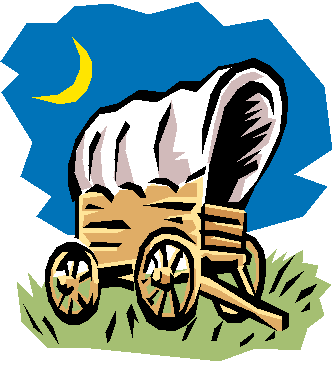History of Education in the U.S. Colonial -
Present (2.1)
"I am convinced that we must train not
only the head, but the heart and hand as well."
-Madame Chiang
Kai-shek
Colonial Schools (1620-1750)

America's formal education system was heavily influenced by
European intellectuals. The schools paralleled the British two-track system. If
poor children went to school at all it was the elementary level only. These
students learned to read, write, basic computation, and religious instruction.
The rich child, or the upper class child, had the opportunity to attend Latin
grammar schools, where they were given a college-preparatory education.
Teachers had some status in the community because they, along with the clergy, had
more education than most of the population. However, their position was
secondary to that of the clergy. Additionally, teachers had to be of high moral
character, which came under intense scrutiny by the rest of the community. They
also had many other duties besides teaching, such as cleaning the school,
substituting for the minister, and ringing the church bell.
Education in the colonies reflected the colonists' beliefs,
values, and concerns. Most colonists believed education should help save souls
and emphasized the scriptures.
New
England (Northern Colonies) colonies (Massachusetts Bay, New
Hampshire, and Connecticut) established town schools with a strong Puritan
tradition.
Different groups in the middle
colonies (New York, New
Jersey, Pennsylvania, and Delaware) established parochial schools that preserved
their various languages and beliefs. These groups were Irish, Scots, Swedes,
Danes, Dutch and German. Anglicans, Lutherans, Quakers, Jews, Catholics,
Presbyterians, and Mennonites tended to establish their own schools, which
promoted their culture, religion and traditions. The Quakers who settled in the
Philadelphia area in the 1680's believed in educating the populace. They were
also tolerant of others' beliefs and ways of life. They had a strong influence
on the development of education and established the first public school.
In the Southern
Colonies (Virginia, Maryland, Georgia, and North and South Caralina),
where society was more structured and stratified according to socioeconomic
classes, the wealthy plantation owners developed their own system to prepare
their sons for further education. Children from poorer households received a
minimal education and slaves from Africa only learned what was necessary to
attend their masters.
Here, religious instruction had an important role, but so too did the more
rigorous education of secondary schools, where the sons of the wealthy learned
the necessary subject matter to prepare them for college on the European
continent. In 1636 Harvard College, the first post-secondary school on the North
American continent, was established in the Boston, Massachusetts area and in
1693 the College of William and Mary in Williamsburg, Virginia was founded.
Informal education in early America meant learning from the family, working
through apprenticeships, and learning from the increasing number of published
books and newspapers.
Dame Schools were
one of the more common types of schools found in the colonies. They were often
established by women, and more often than not run from the home of the person in
charge. Students were charged a modest fee to attend. Education was basic,
concentrating on reading, writing, and calculation. Attendance was often erratic
and dependent on the season and work at home that needed to be done. For most
females the dame school provided their only education and homemaking skills such
as sewing were also included in the instructional process.
Among the tribes that had developed written languages, the Cherokee tribe who
originally lived in the Southern portion of the United States had developed a
system of formal education to pass knowledge from one generation to the next.
They, however, were methodically pushed out of their native territory in the
early 1800's and forced to move to the Oklahoma territory, which limited their
ability to influence educational practice in early America.
Cool History
Site
Vocabulary
Puritan-A member of a group of English Protestants who in the
16th and 17th centuries advocated strict religious discipline and
simplifications of the ceremonies of the creeds of the Church of England.
Parochial Schools-schools founded on religious beliefs.
Dame Schools-colonial schools, usually held in the homes of
widows or housewives, for teaching children basic reading, writing, and
mathematical skills.
Activity 1
Interview veteran teachers or administrator and ask them to
comment on the changes they have observed and experienced during their
careers. Write a paragraph about your interview.
Activity 2
Briefly explain what the status of the teacher was like in
the American colonies ( 1620-1750). Compare it to the status of teachers
today. |
Check
out this powerpoint!
 
|